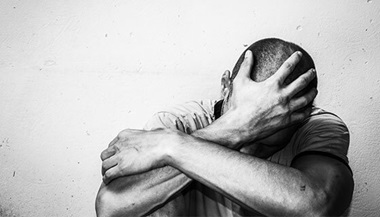Depression: His Versus Hers
To the list of differences between the sexes, add one more: depression. Researchers have known for years that women are about twice as likely to be diagnosed with depression as men, with depression being the leading cause of disease burden among women. But the differences don’t end there.
Depression also looks different in men. “Women with depression may come in crying; men may come in acting out in anger,” says Andrew Angelino, M.D., Chair of Psychiatry at Howard County General Hospital. “We’ve taught boys that they don’t cry; so instead of crying, they get angry and threatening.”

Spotting Depression Differences
The differences appear as early as adolescence, with depressed girls more likely than boys to be dissatisfied with their body image and to have guilt, feelings of failure, difficulty concentrating and sadness. Depressed boys, on the other hand, are more likely to have lost interest in their usual activities and to be more downcast and tired in the morning. As we age, women are more likely to experience stress, sadness and sleep problems when they’re depressed, while men tend toward irritability and impulsive anger.
Men and women also cope with depression in different ways, with women more likely to seek help.
Men are four times more likely to commit suicide than women, accounting for nearly eight out of every 10 suicides in this country. Women, however, are far more likely to have suicidal thoughts. One reason for the higher rate of suicide in men is that they are more likely to use guns, while women are more likely to use less immediately lethal means, like poisoning.
Depression also seems to be very common among the LGBTQ+ community. And unfortunately, people in these groups tend to have such difficulties in accessing any healthcare that depression is most often unrecognized, too often with fatal consequences.
Equal-Opportunity Help for Depression
One key to reducing the risks of major depression, says Angelino, is taking action to prevent episodes, particularly if you have a family history of the disease. Here are some of the best ways to do just that.
Live a healthy life.
That means following a healthful diet, finding ways to manage stress and exercising regularly. “Putting on extra pounds increases the stress on your system and stress markers,” says Angelino. That, in turn, increases the risk of depression.
But the benefits of exercise go beyond weight control, says Angelino. “Exercise gives you a sense of accomplishment that’s powerful when fighting feelings of depression.”
In fact, recent research has found that staying active, even in small amounts, boosts adults’ self-efficacy—a scholarly term for the “I can do this” feeling.
Maintain balance and social supports.
People are more likely to become depressed when their lives get out of control, says Angelino, whether because of work, family issues or health problems. Keeping a list of priorities and sticking to it will help you avoid becoming overwhelmed and feeling trapped or hopeless. Before you hit a breaking point, reach out to loved ones, support groups and your health care team for resources and encouragement.
Go to work every day.
It doesn’t have to be a paid job, but it should be something that provides structure to your day and a sense of purpose and accountability. Consider: One report found that following an initial boost in health, retirement increased the risk of clinical depression by 40 percent. The problem-solving involved in any kind of work provides a sense of accomplishment, Angelino says, which then helps bolster your self-esteem and healthy sense of identity.






